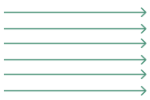INCLUSIEVE KLEDINGLIJN
Van skinny jeans tot een blouse met vele knopen en een lange wintermantel, het zijn allemaal dagdagelijkse kledingstukken die de meesten onder ons zonder enige moeite aan- en uittrekken. Jammer genoeg is dit niet voor iedereen zo simpel en zijn er heel wat mensen die hierbij problemen ondervinden.
Idee bachelorproef
Arne Berteel, een 22-jarige student Modetechnologie, ondervindt dit zelf ook dagelijks. Het spoorde hem aan om voor zijn bachelorproef een kledinglijn te ontwerpen gericht op twintigers met een fysieke beperking. Arne gaat hierin echter nog een stapje verder door de collectie niet enkel te ontwerpen maar ook te ontwikkelen. Om zijn studie succesvol af te kunnen ronden loopt hij daarnaast ook stage bij Soul 15 Costumes & Concepts, waar hij voornamelijk meehelpt met de patronen.
Gat in de markt
Uit eigen ondervinding werd het Arne al snel duidelijk dat mensen met een fysieke handicap niet makkelijk aangepaste kledij vinden. Om hiervan een voorbeeld te geven: te strakke broekspijpen voor mensen met spalken, kleine knopen voor mensen die moeite hebben met fijne motoriek, lastig aan- en uitdoen van jassen en het ontbrekende draagcomfort van een broek voor rolstoelgebruikers. De kleding die reeds op de markt is, is vaak niet modieus en gericht op een oudere doelgroep, Arne ziet hier de kans om zijn creativiteit te gebruiken.
Het meest complexe stuk van zijn collectie is de jas, aangezien dit vraagt om een aanpassing van het rugpand. Waarom? Een vriendin van Arne die een rolstoelgebruikster is, heeft het vaak lastig om haar jas aan- en uit te trekken. Ze lost dit op door de jas achterstevoren te dragen, om een teveel aan stof tussen haar rug en de rugleuning te vermijden. Op zich inventief, maar natuurlijk niet optimaal. Het idee van Arne is om een deel van het rugpand weg te laten zodat dit geen obstakel meer zal vormen. Magnetische knopen, blinde ritsen om broekspijpen breder te maken en comfortabele stoffen zijn de technieken die zijn collectie gebruiksvriendelijker en modieuzer maken.
Handicap is geen beperking
Arne wil vooral benadrukken dat het niet de handicap is die hem, en vele anderen, beperkt maar hoe de wereld rondom hem ontworpen is. Hij is ondertussen al in contact met meerdere bedrijven om ervoor te zorgen dat hij zijn collectie dan ook daadwerkelijk op de markt kan brengen en is vastberaden modieuze kleding te maken die oog heeft voor iedereen. Hij beseft maar al te goed dat hij met zijn collectie geen handicap wegneemt, maar wel de beperking om je zelfstandig en modieus te kunnen kleden.
Indien je denkt Arne hierbij een helpende hand te kunnen bieden, aarzel dan zeker niet om contact op te nemen via arne.berteel@student.hogent.be




 📷 Klaartje De Kegel
📷 Klaartje De Kegel